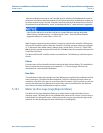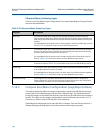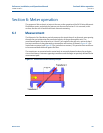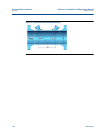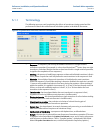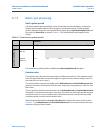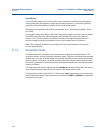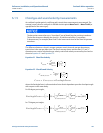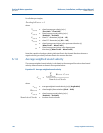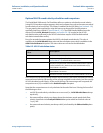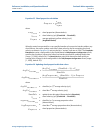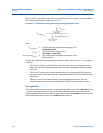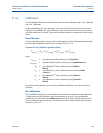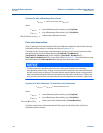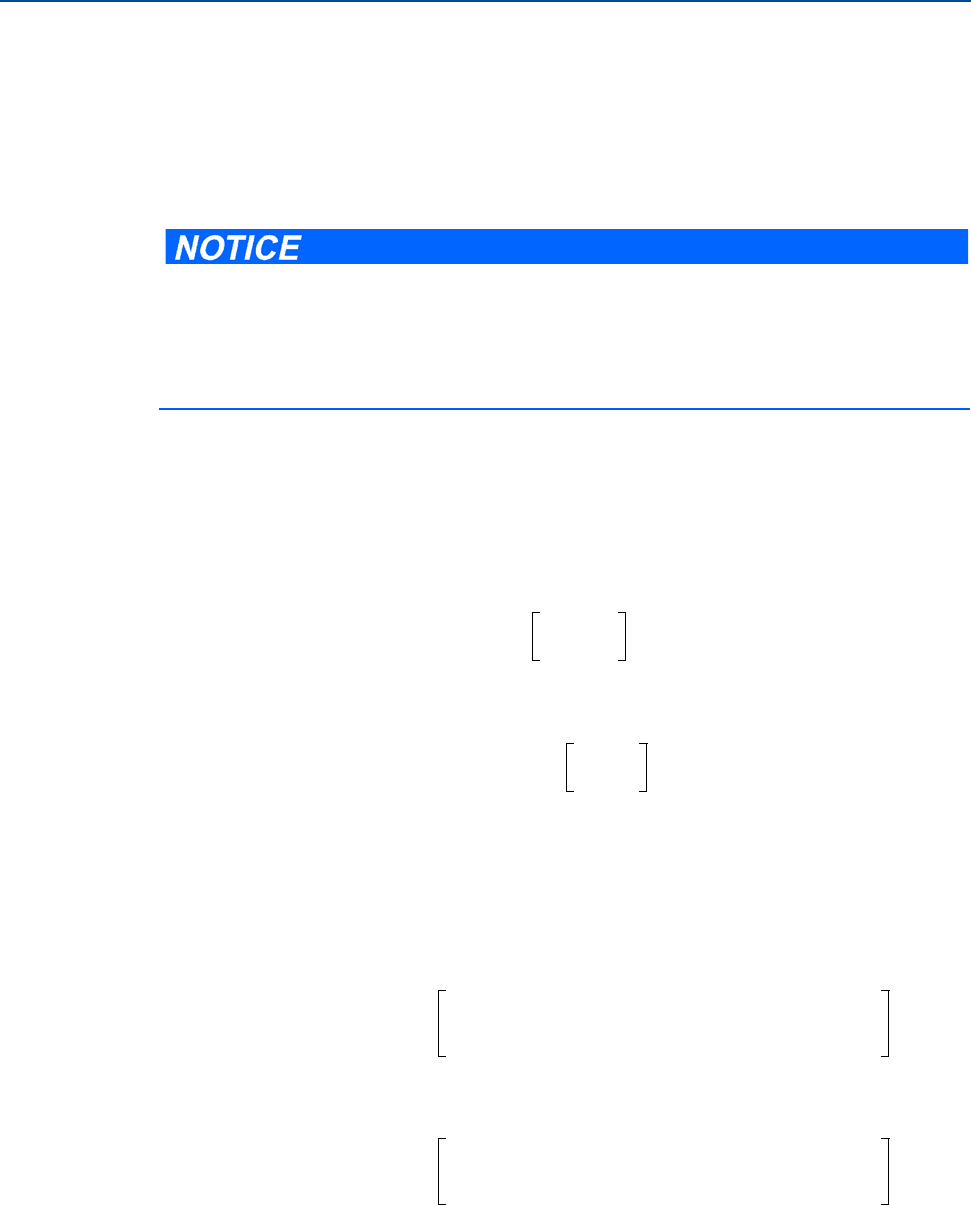
Reference, Installation, and Operations Manual Section 6: Meter operation
3-9000-743 Rev S June 2013
Chord gas and sound velocity measurements 187
6.1.5 Chord gas and sound velocity measurements
At each batch update period, each firing path's transit time measurements are averaged. The
average (mean) value for each path is available via data points MeanTmA1 ... MeanTmD2 (as
appropriate for the meter type).
The difference between a chord's average upstream transit time and average downstream
transit time is the average delta time. The chord's average times and the chord “X” and “L”
dimensions are used to calculate the gas velocity and sound velocity measured by the chord as
shown in Equation 6-1 and Equation 6-2.
Equation 6-1 Chord Gas Velocity
Equation 6-2 Chord Sound Velocity
where the PortAngleFactor is a dimensionless factor that is dependent upon the chord port angle
with respect to the meter body:
For 60 degree port angles,
for 75 degree port angles,
The data point names often use a “short-hand” way of identifying the receiving transducer.
The last two characters identify the chord (A...D) and the transducer (1=upstream,
2=downstream). For example, MeanTmA1 is the mean transit time for the chord A upstream
transducer.
V
chord
L
chord
2
2X
chord
------------------
t
1
t
2
–
t
1
t
2
--------------
=
C
chord classic,
L
chord
2
---------------
t
1
t
2
+
t
1
t
2
--------------
=
C
chord
C
chord classic,
PortAngleFactor×=
PortAngleFactor 1 0.5
V
chord
2
C
chord classic,
2
-------------------------------
×
X
chord
2
L
chord
2
---------------
× 60°()
2
tan×+
=
PortAngleFactor 1 0.5
V
chord
2
C
chord classic,
2
-------------------------------
×
X
chord
2
L
chord
2
---------------
× 75°()
2
tan×+
=



